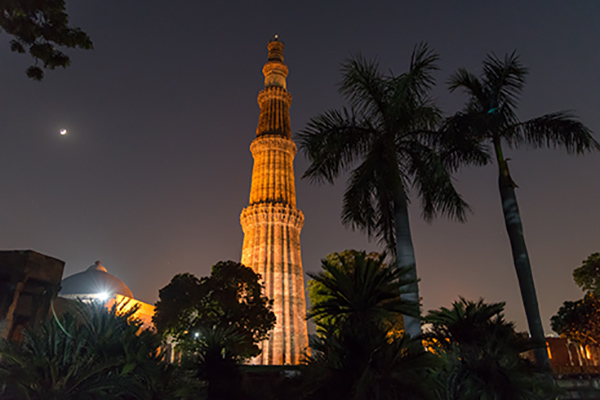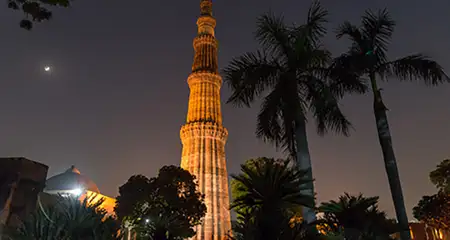Avid travelers visiting New Delhi have always expressed their disappointment at the lack of night tourism in the National Capital. Now, the Archeological Survey of India (ASI) is putting an end to this disappointment by lighting up several age-old monuments dotting the city, including Safdarjung Tomb and Qutub Minar.
While some other cities in the country, like Agra and Jaipur, give tourists an opportunity to view historical monuments at night, the ones in the capital city have been in the ‘dark ages’ for quite some time. The move to deck up Delhi’s monuments for night viewing was initiated last year and in the first phase of the project, the ASI lit up Red Fort, India Gate, and Humayun’s Tomb. Orders have now been released for the second phase of the project which involves implementing similar kind of illumination for Safdarjung Tomb and Qutub Minar.
Currently, the Qutub Minar is partially lit up. According to Dr. N.K Pathak, the Superintending Archaeologist of ASI Delhi Circle, all monuments in the 12th-century Minar Complex including Alai Darwaza and the Iron Pillar will lit up. Energy efficient LED lights will be used to illuminate the calligraphic verses on the minaret, giving tourists an opportunity to marvel at these wonders after sundown. ASI is planning to complete the illumination in the Qutub Minar complex by mid-May. The work to spruce up the Safdarjung Tomb will also be completed soon.
The cost of the project will be about 5 crores, report officials. The illumination will allow visitors to enjoy the beauty of these monuments against Delhi’s night sky. This, according to ASI officials, will promote night tourism in the capital city and also increase the footfall in these historical edifices. More importantly, this will give tourists who are in the city only for a short period a better opportunity to experience the major attractions in the city.
Once the second phase of the project is completed, tourists will get to enjoy the opulent architecture of most of Delhi’s historical monuments even at night. The project is being carried out by the ASI in collaboration with the National Buildings Construction Corporation (NBCC) and the illumination of more historical sites in the capital city is in offing.




























